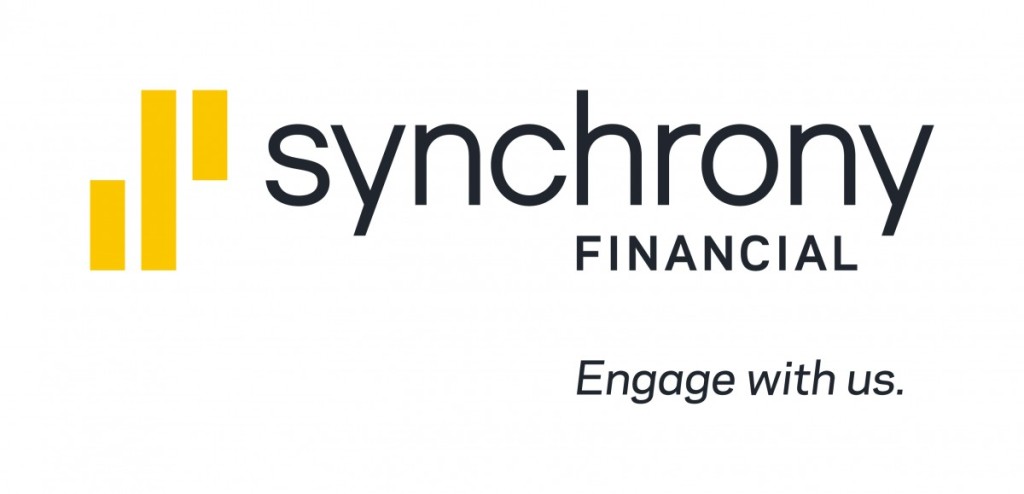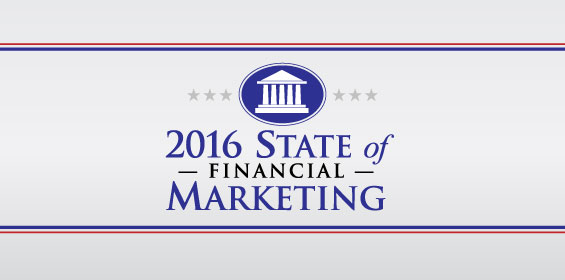News
White Claw encourages consumers to take time off this summer – Marketing Dive
White Claw encourages consumers to take time off this summer Marketing Dive Source: Marketing feed
Read MoreHaus, which helps companies measure marketing ROI, raises $17M – TechCrunch
Haus, which helps companies measure marketing ROI, raises $17M TechCrunch Source: Marketing feed
Read MoreFlash Coffee Hong Kong appoints Maria Bien as Head of Marketing – World Coffee Portal
Flash Coffee Hong Kong appoints Maria Bien as Head of Marketing World Coffee Portal Source: Marketing feed
Read MoreQuantum Seeks Brand Marketing Manager – Fishing Tackle Retailer … – Fishing Tackle Retailer
Quantum Seeks Brand Marketing Manager – Fishing Tackle Retailer … Fishing Tackle Retailer Source: Marketing feed
Read MoreMR Bongo Records – Marketing Executive (Hybrid, UK) – Music Business Worldwide
MR Bongo Records – Marketing Executive (Hybrid, UK) Music Business Worldwide Source: Marketing feed
Read MorePharma Marketing in the Age of AI: A New Era Begins – Pharmaceutical Executive
Pharma Marketing in the Age of AI: A New Era Begins Pharmaceutical Executive Source: Marketing feed
Read MoreScott Holden Joins Brex as Chief Marketing Officer – PR Newswire
Scott Holden Joins Brex as Chief Marketing Officer PR Newswire Source: Marketing feed
Read MoreApple spotlights global fintech ambitions with 'Pay the Apple Way … – Marketing Dive
Apple spotlights global fintech ambitions with ‘Pay the Apple Way … Marketing Dive Source: Marketing feed
Read MoreMeta's Omar Zayat on Preparing for the Future of Entertainment … – Muse by Clio
Meta’s Omar Zayat on Preparing for the Future of Entertainment … Muse by Clio Source: Marketing feed
Read MoreStrategies to Revitalize Your ABM Approach – CMSWire
Strategies to Revitalize Your ABM Approach CMSWire Source: Marketing feed
Read MoreMarket Leader's Podcast Episode 83: "Data-Driven Marketing and … – JD Supra
Market Leader’s Podcast Episode 83: “Data-Driven Marketing and … JD Supra Source: Marketing feed
Read MoreMarketing and Content Coordinator – Axios Charlotte
Marketing and Content Coordinator Axios Charlotte Source: Marketing feed
Read MoreSocial Media Marketing With Residential Proxies: Things You Must … – Information Security Buzz
Social Media Marketing With Residential Proxies: Things You Must … Information Security Buzz Source: Marketing feed
Read MoreAdParlor introduced CreatorFuel: an Influencer Marketing solution – Martechcube
AdParlor introduced CreatorFuel: an Influencer Marketing solution Martechcube Source: Marketing feed
Read MoreThis is what worries communicators, marketers most about AI – PR Daily
This is what worries communicators, marketers most about AI PR Daily Source: Marketing feed
Read MoreThe Ultimate Guide To Startup Content Marketing
Source: Forbes It’s been a long day of work and I plop myself in front of my computer to relax on YouTube. When I click on a video, the first thing that comes up: an advertisement. I groan and look away. I hate ads. You probably do too. The Internet has made it possible for…
Read More5 Critical Digital Marketing Issues Facing Financial Execs in 2016
Source: The Financial Brand There are a handful of issues that should be on the top of every financial marketers’ mind this year: mobile advertising, personalization, martech, personalization and (of course) marketing ROI. By Jeffry Pilcher, CEO/President & Publisher of The Financial Brand 1. Digital Advertising There are three main areas where financial marketers are allocating dollars…
Read MoreBuilding a C-Suite Savvy Digital Marketing Plan
If financial marketers hope to get the resources and budgets they want, they must first build a digital marketing roadmap and get the C-suite on board. By Mark Gibson, Senior Consulting Associate at Capital Performance Group According to the 2016 State of Financial Marketing survey, marketing ROI, automation, digital marketing and data analytics are among the top marketing issues…
Read MoreWhy Content Marketing Is Essential to Customer Relationships and Brand Awareness
Source: Business2Community “Google only loves you when everyone else loves you first,” quipped entrepreneur Wendy Piersall in 2007. Want to increase the reputation of your brand online? Content marketing is something you can’t ignore if you do marketing or advertising on the internet. If you want to attract customers and generate sales, content is crucial. From brilliant…
Read MoreBirthing A Billion-Dollar Brand: The Launch Of Synchrony Financial
Source: Forbes You’re the CMO of a $22 billion company and your boss asks you to launch a top-to-tail branding effort. Who’s the first person you call? Your favorite agency contact? Your most trusted team member? A recruiter? When Toni White, CMO of Synchrony Financial, was asked to rebrand the GE Capital Retail Finance business –…
Read MoreHow Diverse is Your Content Marketing?
Source: Business2Community Diversity |diˈvərsitē, dī-| noun: a range of different things. How do you consume content? Do you prefer reading? Listening? Watching? In today’s digital world, it’s more important than ever to have something for everyone. Whether that’s a blog, eBook, infographic, video, case study, or podcast, your prospects have different preferences for their journey through the sales…
Read MoreThe bitter-sweet ads designed to win back trust in financial services
Source: The Conversation UK How do you win the trust of consumers when the recent history of your industry is punctuated by insurance mis-selling scandals and the global financial crisis? Add to that widespread disinterest in and limited understanding of your products, which are largely to do with debt, death, disability and deferred happiness rather than living in the…
Read MoreBanking Marketing ROI: No Consensus
Source: The Financial Brand Most financial marketers don’t really know what their efforts achieve, and for most CEOs and CFOs, there just isn’t any excuse. How can anyone figure out how much should be spent on marketing if they can’t calculate ROI? Marketers have to run the numbers and do the math. By Mark Gibson, Senior…
Read MoreCrafting Double-Duty Transactional Emails With Marketing Messages
Source: The Financial Brand Imagine… An accountholder at your financial institution — we’ll call her Emily — has just received her monthly email notice telling her that her new statement is available. Emily waits until her lunch hour to open it, figuring she’ll use the link in the e-mail to log into online banking, but…
Read MoreBank Marketing: Dump Data Scientists — Try Marketing By Walking Around
Source: Forbes The “2016 Guide to Financial Marketing” published by the Digital Banking Report doesn’t actually say banks should give up on marketing analytics, but in showing how bad they are at it, the report inadvertently makes a pretty strong case for dumping sophisticated customer data analysis and trying something else. Perhaps get out of the office…
Read MoreThe Write Stuff: The What, Why and How of Content Marketing
Source: Business.com For many engaged in business, the term “content marketing” is this sort-of nebulous thing that everybody says you should be doing. But you don’t really know why, or how, or even what it is. Don’t feel alone. Even the experts don’t totally agree on a definition. Content Marketing Institute (CMI), a global content…
Read More10 Marketing Trends Banking Can’t Ignore
Source: The Financial Brand Here are the top 10 trends that will impact the future success of your financial services marketing in 2016 and beyond. By Jim Marous, Co-Publisher of The Financial Brand and Publisher of the Digital Banking Report The most important objective for any successful financial marketer is to focus on improving the customer experience across…
Read More2016 State of Financial Marketing
Source: The Financial Brand This 5th annual analysis of marketing in the financial services industry reveals bank and credit union strategies, priorities and challenges in 2016 — data analytics and measurement are behind the times, movement to digital communication is slow and branches continue to be built. Now in its fifth year, the “State of Financial Marketing”…
Read More4 Tips for Developing a Successful Digital Marketing Strategy
Source: The Financial Brand A survey of 3,000 financial institutions found that fewer than 15% have mature digital marketing strategies. Here are four tips from marketing leaders in the financial industry to help you forge the right strategy and find success. By Susan Marshall, CEO and co-founder of Torchlite Digital Marketing 1. Be Data-Driven Donna Lyon, who heads…
Read MoreAny industry can be disrupted by tech. Now it’s real estate.
Source: New York Times A New Dimension in Home Buying: Virtual Reality The goggles were strapped to my face like a scuba mask. Only instead of fish, a studio apartment was wavering in my field of vision. I moved forward, trying to enter the bathroom. Feeling slightly seasick, I hit the wall. This was…
Read MoreWhat Facebook Knows About Marketing Banking Services to Millennials
Source: The Financial Brand Here are four key financial marketing insights Facebook uncovered by mining thousands of conversations among its Millennial users. Nearly anything market researchers and social scientists could ever want to know about consumers could be gleaned from Facebook’s ginormous database. It is quite possibly the biggest collection of consumer insight in the…
Read MoreShark Tank: AquaVault Unlocks Secrets Of Hooking A Deal And Marketing With No Money
Source: Forbes The AquaVault, a portable lockbox, is the type of travel product you would find in the pages of SkyMall magazine next to the heated stadium seat cushion, eye mask attached to a travel pillow or luggage belt with a built-in scale. They’re ingenious yet paradoxically frivolous outside of the first world because of the obvious…
Read MoreThe Power of Empathy
Source: The Guardian Snackable content can give the numbers a boost – but it’s content with a meaningful message that has enduring appeal TC Bank’s Dream Rangers ad has been viewed over 5.5 million times on YouTube. It’s inspired by a real-life group of older people who decided to get back on their motorbikes and go on…
Read MoreReal, quality content is king again
Source: Esource With the release of a series of algorithmic updates over the past few years, Google has upended the internet landscape and the world of website owners. Suddenly, website owners discovered that they could no longer drive traffic through the use of generic, bland, and repetitive content. Suddenly, quality content was king once again.…
Read MoreWhy Content Marketing Is the Best Long-Term Marketing Strategy
Source: Inc. For my money, there’s no better long-term strategy than content marketing. Here’s why. BY JAYSON DEMERS Founder and CEO, AudienceBloom Most older marketing and advertising strategies have been based on short-term gains. For example, a direct mail piece might convert a handful of recipients, but once it’s sent out, most of the batch gets…
Read MoreBanking vs. Fintech: A Business Case for ‘Coopetition’
Source: The Financial Brand In an increasingly digital banking environment, there is increasing validation for ‘coopetition’, with fintech firms partnering with legacy banking organizations. By Jim Marous, Co-Publisher of The Financial Brand and Publisher of the Digital Banking Report Banking is an industry that has historically been slow to change, benefitting from unique product-specific expertise, extensive distribution networks,…
Read MoreThe New Content Marketing: 5 Major Changes Brands Need to Make
Source: Business News Daily Although “content marketing” has become standard practice for all brands only over the last 15 to 20 years, the concept of creating content specifically for your brand’s target customers is not new. According to a Content Marketing Institute blog post, content marketing has always been about storytelling — but online outlets have…
Read MoreSurvey: When Good Content Marketing Tools Go Bad
Source: Forbes Don’t settle for duct tape when you need a screwdriver. I learned that at the tender age of nine when I needed to tighten the screws on my skateboard. I couldn’t find a screwdriver anywhere in my dad’s tool box, so I grabbed what I thought was the next best thing – duct…
Read MoreBigger Isn’t Necessarily Better: Why Content Campaigns Fail
Source: Search Engine Journal Do you know why I love content marketing? Because every brand can make a considerable impact—regardless of their size. It doesn’t take a multi-million dollar budget or even hundreds of posts each month. In fact, sometimes large budgets and high quantity can lead to worse content marketing. I’ve seen many companies…
Read MoreNot all social media returns can be quantified — but here are some ways to measure your success
Source: Memeburn As businesses start to dedicate more resources to managing their social media channels, the question that they are asking is how they should measure return on investment. There is no simple formula for creating a rand-and-cents metric for measuring social media. But social media does offer you the flexibility of setting up the…
Read More

















